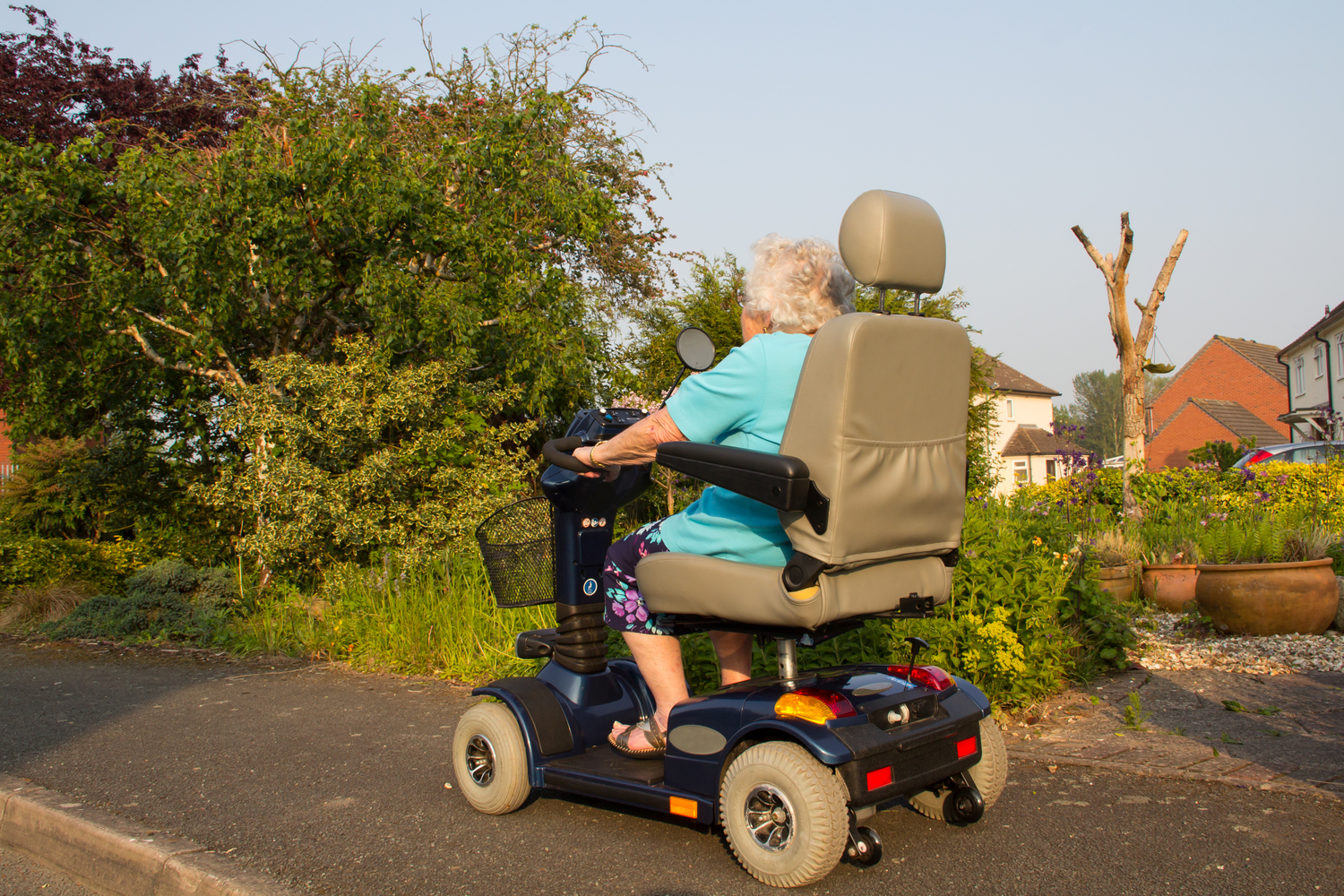An Overview Of Mobility Scooters

An overview of mobility scooters
A mobility scooter is an aid for movement, which is equivalent to a wheelchair, and it is shaped like a motor scooter. Frequently, a mobility scooter is referred to as an electric scooter or a power-operated vehicle/scooter as well. The mobility scooter seat is rested over three, four, or now five wheels, and it has a leveled area or foot plates for the feet. It also has an arrangement of handlebars or a delta-style steering in front to turn one, two, or three steerable wheels. The seat may also turn around so as to allow access when the front is blocked by the handlebars. Usually, these scooters are battery powered. There are one or two batteries that are stored in the board of the scooter. This scooter can be charged via an onboard or through a separate battery charger unit from a standard electric power. In some countries, gasoline-powered scooters are also available, but now they are rapidly replaced by electric models. In 1954, the first mobility scooter, which was billed by Sears as an electric wheelchair, was introduced. But it was not a commercial success as it had a large seat, an extra battery capacity, and a three-wheel design.
What are the advantages of a mobility scooter?
For handicapped individuals, confinement can be the most depressing situation. None likes being confined to the four walls for a long duration of times, especially, when it is unnecessary. Devices like walkers are great for individuals who suffer from balance issues or need more support. However, for those who need more than just a walker to move around, especially, long distances, a mobility scooter is extremely helpful. Below some of the many benefits of a mobility scooter:
- Independence – Mobility scooters are designed to provide disabled individuals with a safe mode of transportation. They make it easier for individuals to go to places they want to or need to go to. Daily chores around the town to get some errands done is possible with the help of a mobility scooter.
- Prevention of falls – Individual whose body is weak or tired is more prone to falling. Walkers are helpful, but they can only do so much. With the help of a mobility scooter, an individual can get around to places even at a distance without pushing their limits of mobility and risk an injury or falling.
- Physical exertion is becoming more challenging – When exertion is a challenge, mobility scooters can help save a person’s energy. These vehicles are the perfect mobility tool for individuals who have weak upper body strength, disability in the legs or upper body, or need to carry oxygen tanks. They help in keeping the person mobile who otherwise would be confined.
- Faster healing and recovery – After an injury or an illness, everyone needs time for recovery. A mobility scooter can help an individual stay mobile, but ensure that healing takes place without putting a strain on the body, muscles, and joints.
What are the limitations associated with mobility scooters?
Some of the limitations associated with mobility scooters are:
- More maintenance is required for the mobility scooter as compared to a walker or a manual wheelchair.
- From time-to-time, the mobility scooter requires battery replacement. There are belts, gears, and other parts that may also need replacement.
- It is difficult for a mobility scooter to fit into most cars as opposed to walkers or folding wheelchairs.
- Mobility scooters can be expensive if there is no financial help from the health insurance companies.
- Mobility scooter riders do not get an opportunity to exercise.
- A mobility scooter cannot move if its battery or motor fails.
- Use of these scooters is discouraged in heavy rain as electric components may get damaged because of water and moisture.
Are there any rules for driving a mobility scooter on the pavement?
- Mobility scooters and wheelchairs with the maximum of 4mph are legally allowed to travel on footpaths or in pedestrian areas.
- Any type of mobility scooter or powered wheelchair is not allowed to be driven on cycle paths.
Can people below 18 years of age ride a mobility scooter?
- The mobility scooter can be used by the disabled people or those who cannot walk very far just as they are allowed to use a manual and power wheelchair.
- Anyone who needs it can use regardless of age can make use of a mobility scooter
- The only aspect that matters is whether one is able to sit on it and if they have the capacity to operate it well and responsibly.
- Even though there are no specific age restrictions on using a mobility scooter, it is recommended that an individual of at least be 14 years of age of or over to use the mobility scooter.